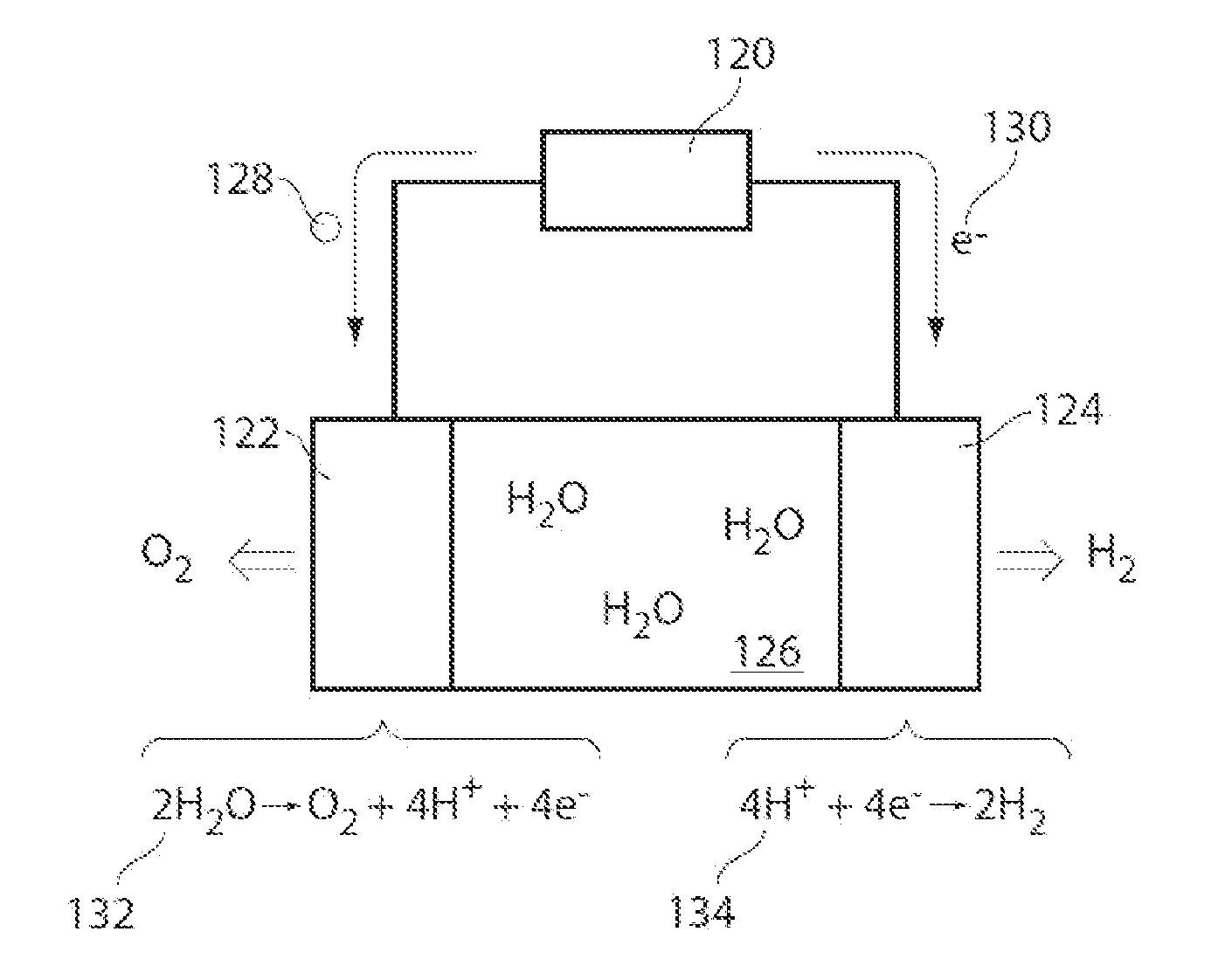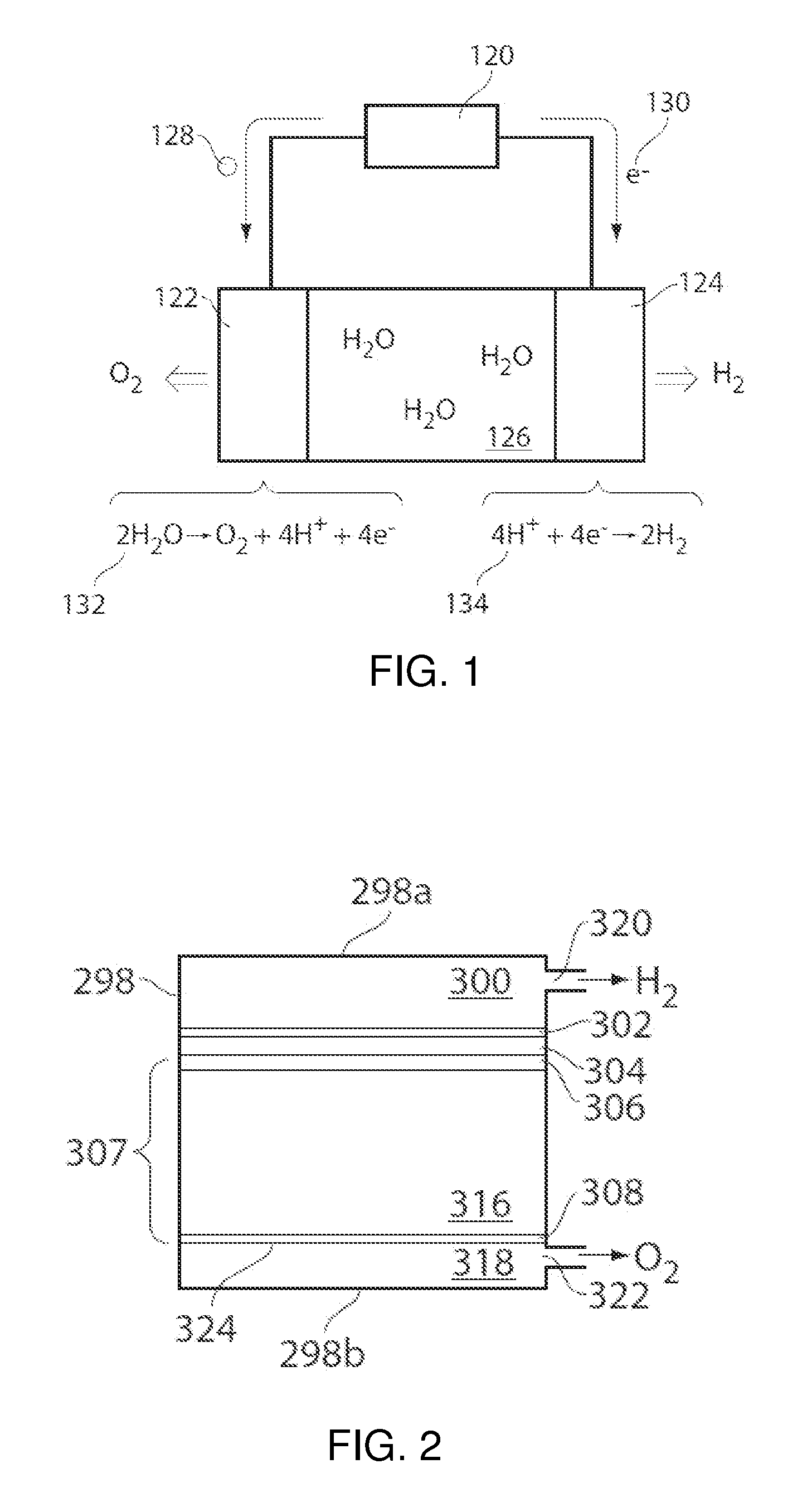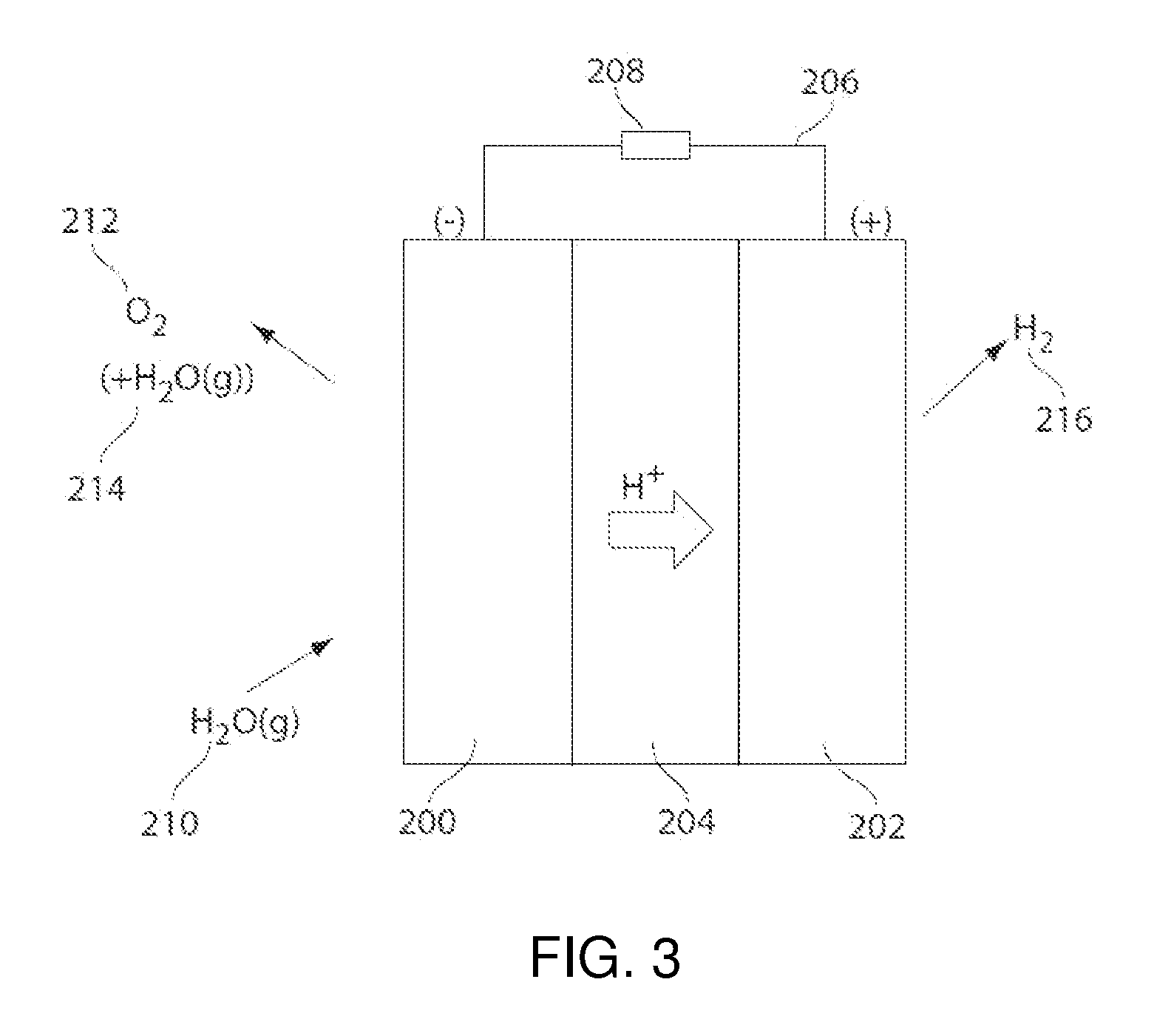Compositions, electrodes, methods, and systems for water electrolysis and other electrochemical techniques
a technology of water electrolysis and electrodes, applied in the field of compositions, electrodes, methods, systems for water electrolysis and other electrochemical techniques, can solve the problems of limited commercial applications, limited conversion efficiency, and considerable effort expended in water electrolysis, and achieve the effects of increasing the surface area of the catalytic material
- Summary
- Abstract
- Description
- Claims
- Application Information
AI Technical Summary
Benefits of technology
Problems solved by technology
Method used
Image
Examples
example 1
[0157]The following example described the synthesis of an electrode comprising a nickel metal alloy (e.g., catalytic material) and the use of the electrode for the production of hydrogen gas from water. Specifically, platinum (Pt) and nickel molybdenum (NiMo) were evaluated for their catalytic ability to evolve hydrogen (H2) in buffered solutions containing potassium phosphate (KPi) and potassium borate (KBi).
[0158]Materials and General Methods. Potassium phosphate (monobasic), dipotassium phosphate (dibasic), sodium citrate dihydrate, ammonium hydroxide, potassium hydroxide (KOH) (VWR), boric acid (Sigma-Aldrich), nickel sulfate hexahydrate (Alfa Aesar), and sodium molybdate dihydrate (EMD Chemicals) were used as received. Buffer solutions were prepared to 1.0 M concentration, the pH adjusted with KOH, and the solutions filtered through a 0.2 μm Nylaflo membrane (VWR) prior to use. All electrochemical experiments were performed in a three electrode cell configuration using a potent...
example 2
[0163]The following example describes the preparation of stable alloys with high activity for the hydrogen evolution reaction in pH 7 phosphate and pH 9.2 borate electrolytes.
[0164]Deposition of NiMo alloy. The NiMo plating bath consists of nickel (II) sulfate hexahydrate (64 g L−1; Alfa Aesar), sodium molybdate dihydrate (48 g L−1; EMD), and sodium citrate dihydrate (60 g L−1; VWR). The pH of the bath was adjusted to 10.5 using ammonium hydroxide (VWR). NiMo was deposited onto a Pt RDE substrate at a current density of 100 mA cm−2 for one hour at a rotation rate of 2000 RPM. The resulting deposit appeared with a noticeable spiral pattern because of the rotation involved in deposition. The coloring in the spiral alternated between dark black and shiny metal with the edges consisting primarily of the shiny metal. NiMo deposits using a similar plating bath reported the presence of 75 atom % Ni and 20 atom % Mo.
[0165]Deposition of the NiFeZn alloy. The NiFeZn plating bath consists of n...
example 3
[0168]The following example describes the preparation of a stable, porous electrode with high activity for the hydrogen evolution reaction in pH 7 phosphate and pH 9.2 borate electrolytes.
[0169]Materials and Methods. Ni foam (Inco Advanced Technology Materials (Dalian)Co. Ltd; 320 g / m2, 1.7 mm thick), PtIr (20% Ir) wire (Strem Chemicals, Inc.), sodium molybdate (Na2MoO4.2H2O), nickel chloride (NiCl2.6H2O), cadmium nitrate (Cd(NO3)2.4H2O), sodium pyrophosphate (Na4P2O7.4H2O), sodium bicarbonate (NaHCO3), and hydrazine hydrate (N2H4H2O) (Aldrich) were used as received.
[0170]Deposition of NiMoCd alloy on Ni foam. The NiMoCd alloy was deposited on 1 cm2 of Ni foam (0.5 cm2 per side) as previously described. Briefly, the Ni foam substrate was immersed in a plating solution in a 3-electrode electrochemical cell containing Na2MoO4.2H2O (0.02 M), NiCl2.6H2O (0.04 M), Cd(NO3)2.4H2O (0.3 mM), Na4P2O7.4H2O (0.13 M), NaHCO3 (0.89 M), and N2H4.H2O (25 mM) at pH 7.5-9. A galvanostat was used to a...
PUM
| Property | Measurement | Unit |
|---|---|---|
| Fraction | aaaaa | aaaaa |
| Fraction | aaaaa | aaaaa |
| Fraction | aaaaa | aaaaa |
Abstract
Description
Claims
Application Information
 Login to View More
Login to View More - R&D
- Intellectual Property
- Life Sciences
- Materials
- Tech Scout
- Unparalleled Data Quality
- Higher Quality Content
- 60% Fewer Hallucinations
Browse by: Latest US Patents, China's latest patents, Technical Efficacy Thesaurus, Application Domain, Technology Topic, Popular Technical Reports.
© 2025 PatSnap. All rights reserved.Legal|Privacy policy|Modern Slavery Act Transparency Statement|Sitemap|About US| Contact US: help@patsnap.com



